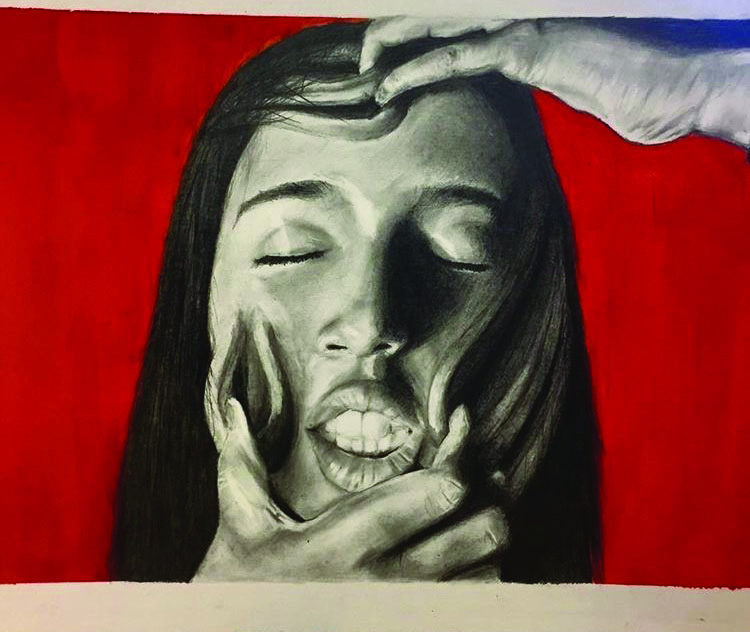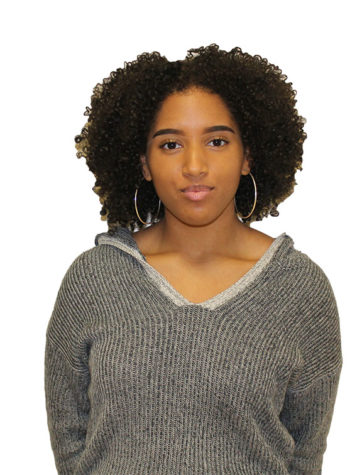AP Art: The Beautiful Side of AP
April 4, 2017
Just two letters in the entire alphabet strike fear in the hearts and terror in the eyes of high school students across the country: AP.
Advanced Placement courses are rigorous, college-level classes that students fight through in order to potentially obtain college credit. We all know about the “mainstream” AP’s such as NSL Government, World History, English Language and Literature, Environmental and Psychology. Some students may even go on to venture into the rough waters of highly challenging AP level courses in math or science such as AP Stat or AP Physics.
A quick look at the aforementioned courses reveals one glaring omission: the arts. This is, in part, due to the fact that far fewer students take AP art classes. However, a closer look at the niche that is AP art courses reveals student-artists whose work is exemplary.
Here at PB, a student has the option to pick from two forms of AP classes. First, there is AP Studio Art. In this course, taught by Mrs. Mandy Cooper, students hone the skills learned in prior Foundations of art classes and go on to master techniques in order to submit by the end of the year. Brandon White, a senior here at PB, is a student of Mrs. Cooper’s AP Studio Art class.
Brandon’s encouragement came from Mrs. Murtagh, who preceded Mrs. Cooper in AP Studio Art. Brandon notes that Ms. Murtagh noticed his abilities and pushed him to improve and challenge himself by moving on to the AP level. Brandon believes AP Studio Art has “a lot more options in mediums you can use. In on-level, everything from medium, concept and composition is chosen for you. I wouldn’t say AP art is harder, but it just requires more time management because you have to get pieces in by a certain time.”
Danielle Rehwoldt, a classmate of Brandon’s, also goes through the challenges of AP Studio Art. She was in painting last year when Mrs. Cooper exclaimed, “She would be crazy not to join AP!” Danielle’s inspiration stems from the smaller details of people, her favorite subject to portray. For her AP portfolio, Danielle is working on “pieces of overlooked common mental illnesses.” Like Brandon, Danielle does not see AP art as harder than on-level, but rather more of “a challenge that requires work to be done within time limits [and] with higher expectations.”
The second AP art course offered here at PB is AP Photography. Mrs. Britt Salem leads this program of digital art, which is aimed at portraying deeper meanings through images. Mrs. Salem’s interest in the arts has existed “since she could hold a pencil.” There were no AP art courses provided in her high school; however, she still fed her craving for the subject and started taking things more seriously in college. On the differences between AP and on-level photography, Mrs. Salem believes “AP is more independent, and the students in that class deal with developing more conceptual work. Being in AP means a student is able to create deeper meanings, concepts, and artist’s statements. We do that in on-level classes, but not nearly as in depth.”
Mrs. Salem reveals that students who to take AP photography are “students looking to pursue art not only for college credit, but for their future careers.”
Students who take AP Photography are devoted and hardworking. Samantha Dao, a senior, shares that photography “brought [her] together with other photographers both in and out of school and allowed me to see life through a lens in a beautiful way.” Her inspiration comes from her mom who “did a lot of film developing while [she] grew up, which fascinated [her] and was a huge push factor.” Samantha believes AP Photography is “more demanding in the sense that your work has to have a deeper meaning. You can’t just pick up a camera and shoot anymore.”
Seth Cushman, another senior in AP Photography, also works hard in the class. When asked why he joined photography, Seth says, “I enjoy the camera and its elements in capturing beautiful images of the world.” Seth’s inspiration and encouragement came from his photo teacher, Mrs. Salem, along with previous photo students. He took learning the workings of a camera into his own hands by “picking up [his] dad’s camera and doing a bunch of research,” which enabled him to skip the first level photography course entirely. He agrees with Samantha in the belief that “AP is much more intense and requires more work to be done.”
With the AP exam season fast approaching, AP Art students are busy preparing portfolios, which consist of the three subheadings for the course: Concentration, Breadth, and Quality. Each element requires that students produce and present pieces, both visual and written, for assessment at the end of the year.
The organization of an AP portfolio requires hard work and dedication. The pieces students create are the product of many months and long hours spent going over each and every detail in order to ensure perfection. AP students work diligently throughout the year to showcase their best work among other students from across the country, in hopes of standing out against all others to achieve a perfect score.














































